Results 11,931 to 11,940 of 12089
Thread: Anandtech News
-
11-02-23, 03:42 PM #11931
Anandtech: AMD Unveils Ryzen 7040U Series with Zen 4c: Smaller Cores, Bigger Efficien
In May, AMD unveiled their Ryzen 7040U series of CPUs designed for thin and light notebooks, which they codenamed 'Phoenix.' Initially, AMD announced four Zen 4-based CPUs for the ultra-portable notebook market, with the Ryzen 7 7840U (8C/16T) and Ryzen 5 7640U (6C/12T) both leading the charge with AMD's integrated Ryzen AI, which is AMD's first-generation NPU for on-chip AI and inferencing.
Fast forward a few months, and AMD is unveiling an additional two new Ryzen 7040U series processors. But there's a twist: these chips are using their smaller and highly optimized Zen 4c cores. Although AMD's more petite Zen 4c core initially debuted with the launch of their EPYC 97x4 'Bergamo' processors for native cloud deployments, server chips were never going to be the only place AMD used their compact cores. Zen 4c was already silently released in the consumer market as part of the Ryzen Z1 (non-extreme) CPU used in ASUS's ROG Ally handheld (2x Zen 4 + 4x Zen 4c), and now Zen 4c is getting a proper welcome in the consumer market with its use in a set of Ryzen laptop chips.
The first of the two new Ryzen 7040U processors with Zen 4c is the Ryzen 5 7545U, which coincidentally shares similar specifications to the existing Ryzen 7540U processor. The critical difference is that the Ryzen 5 7545U uses two full-fat Zen 4 cores with four of the smaller Zen 4c cores, which is an interesting implementation, to say the least. The second is the Ryzen 3 7440U, a direct successor to the...well, processor with the same name, the Ryzen 3 7440U, which has the exact specifications, with the only difference coming in using three Zen 4c cores, with just one Zen 4 core.
There's some nuance to pick apart with AMD's decision to use Zen 4c within their mobile platforms, as AMD highlighted at the launch of Bergamo that the 'c' in Zen 4c stands for 'Cloud,' and it's interesting to see AMD opting to integrate Zen 4c in a primarily low-end consumer segment. There are very notable differences between Zen 4 and Zen 4c, which makes things interesting, to say the least, especially when comparing the two core architectures and their intended use cases.
More...
-
11-02-23, 07:23 PM #11932
Anandtech: Samsung's Next-Gen 3nm and 4nm Nodes on Track for Mass Production in 2H 20
Samsung is set to start making chips using its 2nd Generation 3nm-class (SF3) manufacturing technology as well as performance-enhanced version of its 4nm-class (SF4X) fabrication process in the second half of next year, the company told its investors this week. Both production nodes are expected to significantly improve competitive positions of the company as they will enable it to build new types of products.
"We will strengthen our technology competitiveness through the 2H [2023] mass production of the 2nd generation 3nm process as well as the 4th generation 4nm process for HPC," a statement by the company reads. "The market is forecast to shift to growth thanks to a rebound in mobile demand and continued growth in HPC demand."
Samsung's forthcoming SF3 process technology is a major upgrade to its existing SF3E production node, which, based on the available knowledge, is only used to make small chips for cryptocurrency mining. Samsung asserts that the SF3 will offer greater design versatility by allowing for different gate-all-around (GAA) transistor's nanosheet channel widths within the same cell type.
Although Samsung does not make direct comparisons between SF3 and SF3E, it says that SF3 offers major improvements over SF4 (4LPP, 4nm-class, low power plus), which includes a 22% increase in performance at equivalent power and complexity, or alternatively, a 34% reduction in power consumption at the same frequency and transistor count, along with a 21% reduction in logic area. In general, it is expected that SF3 will be a better option for complex designs than SF3E, though it will enter high-volume production in the second half of 2024.
In the meantime, Samsung Foundry's 4nm-class generation nodes continue to evolve. The company gearing up to launch its SF4X (4HPC, 4 nm-class high-performance computing) process technology, tailored for high-performance applications such as CPUs and GPUs used in data centers. This one is going to be SF's first process node in recent years that has been specifically designed for high-performance computing (HPC) applications.
Samsung's SF4X process technology promises to deliver a 10% improvement in performance along with a 23% reduction in power consumption. While Samsung has not disclosed the baseline for this comparison, it is likely in reference to their standard SF4 (4LPP) process. This enhancement is achieved through a redesign of the transistor's source and drain regions, following a reassessment of their performance under potentially high-stress conditions, the application of advanced transistor-level design-technology co-optimization (T-DTCO), and the implementation of a new middle-of-line (MOL) architecture.
With refined MOL architecture, SF4X is expected to achieve a silicon-validated minimum operating voltage (Vmin) for CPUs at 60mV, reduce the variability in the off-state current (IDDQ) by 10%, ensure stable high voltage (Vdd) operation above 1V without compromising performance, and enhance process margin for SRAM.
More...
-
11-03-23, 10:42 AM #11933
Anandtech: Arm Acquires Minority Stake in Raspberry Pi
Arm Holdings has acquired a minority stake in Raspberry Pi Ltd, reinforcing a partnership that began in 2008. This strategic investment is designed to support development of Raspberry Pi's low-cost low-power Arm-based platforms aimed at edge computing and IoT applications, leveraging Raspberry Pi's ability to deliver affordable, high-performance computing globally.;
"Arm and Raspberry Pi share a vision to make computing accessible for all, by lowering barriers to innovation so that anyone, anywhere can learn, experience and create new IoT solutions," said Paul Williamson, SVP and GM, Internet of Things Line of Business, Arm.
Raspberry Pi's single-board-computers (SBCs) for students, enthusiasts, and commercial edge and IoT developers have historically been based exclusively on system-on-chips featuring Arm cores. This is a big deal for Arm as Raspberry Pi has sold more than 40 million SBC units as of 2022, a huge number for Arm, which has not seen much success with IoT, despite high expectations of Softbank.
The use of Arm technology has been quite beneficial for Raspberry Pi's product development, providing the necessary performance, energy efficiency, and software ecosystem to facilitate accessible computing for a wide range of users, from students to professional developers. But in the recent years competing SBCs based on RISC-V SoCs began to emerge, posing threat to Raspberry Pi's domination and to Arm's place in emerging edge computing, edge AI, and IoT markets.
In a bid to strengthen Raspberry Pi's positions, Arm is infusing the company with cash, possibly trying to speed up development of more versatile and competitive solutions (either in terms of performance, or in terms of power).
"With the rapid growth of edge and endpoint AI applications, platforms like those from Raspberry Pi, built on Arm, are critical to driving the adoption of high-performance IoT devices globally by enabling developers to innovate faster and more easily," said Williamson. "This strategic investment is further proof of our continued commitment to the developer community, and to our partnership with Raspberry Pi."
More...
-
11-07-23, 02:22 PM #11934
Anandtech: AMD's EPYC 7003 "Milan" Receives Extended Lifecycle: Availability To 2026
AMD has sent word over this morning that the company is extending the product lifecycle for their previous-generation EYPC 7003 “Milan” family of server CPUs. The company will now be offering the Zen 3-based CPUs through at least 2026, and as part of that extension plan, has already launched a further 6 SKUs. With these changes, Milan is effectively being repositioned as a budget server platform for AMD, offering AMD’s past tech at a discount to cost-weary customers.
First launched in early 2021, AMD’s EPYC 7003 “Milan” platform is based on the company’s Zen 3 architecture, offering chips with up to 64 CPU cores, 8 channels of DDR4 memory, and PCIe 4.0 connectivity. The platform has since been superseded by AMD’s numerous Zen 4-based EPYC 9004/8004 server platforms – Genoa, Bergamo, and Siena – but for continuity and support reasons, the Milan platform is still being offered to customers. And now, it seems, it will be for even longer than AMD was first expecting.
As of today, AMD is extending the availability of the Milan platform to 2026. All the while, the company is repositioning the platform as their newest budget offering, pitching it at customers who are on the trailing-edge of server technology and need a proven platform to upgrade to, but for whatever reason aren’t ready to upgrade to the 4th generation EPYC platforms. In practice, AMD is trying to entice Intel Xeon Scalable customers who are looking to replace their aging servers, but aren’t ready or eager to move on to 4th gen Xeon Scalable (Sapphire Rapids).
Competitively, Milan doesn’t offer much of note with regards to performance or features compared to AMD and Intel’s contemporary platforms. But for customers already invested in it and who need the ability to repair or bring online additional matching systems over the next couple of years, it will remain in service.
Meanwhile, the company is also re-launching 6 new Milan SKUs to underscore its position as a budget platform. All of these chips were first released by AMD back in September without much fanfare, but now that AMD is extending Milan’s availability to 2026, they are using the moment to spotlight their existence.
The 6 new chips are a bit of an eclectic mix. The top two SKUs – the 56-core 7663P and 48-core 7643P – are 1P-only versions of existing Milan chips at a lower price. Meanwhile the 7303 and 7203 parts are new, with AMD offering ultra-budget server chips with just 16 and 8 cores respectively. The 7203/7203P are true entry-level chips by server standards, with just 8 CPU cores, 64MB of L3 cache, and peak clockspeed well below AMD’s only other 8 core Milan (72F3). However, all of these chips come with the full I/O and memory channels supported by the Milan/SP3 platform, allowing AMD to position them as alternatives to the more limited EPYC 8004 Siena platform.AMD EPYC 7003 Milan New SKUs AnandTech Core/
ThreadBase
Freq1T
FreqL3
CachePCIe Memory TDP
(W)cTDP
(W)Price
(1KU)7663P 56 112 2000 3500 256MB 128 x 4.0 8 x DDR4-3200 240 225-280 $3,139 7643P 48 96 2300 3600 256MB 225 225-240 $2,722 7303 16 32 2400 3400 64MB 130 120-150 $604 7303P 16 32 2400 3400 64MB 130 120-150 $594 7203 8 16 2800 3400 64MB 120 120-150 $348 7203P 8 16 2800 3400 64MB 120 120-150 $338
More...
-
11-08-23, 10:54 AM #11935
Anandtech: Seagate's HAMR Update: 32 TB in Early 2024, 40+ TB Two Years Later
Hidden deep in Seagate's financial report released late last month was a brief roadmap update for the company's heat-assisted magnetic recording (HAMR) technology. As noted in the latest update, Seagate is now planning to begin mass production of its 32 TB HAMR in early 2024, which is a slight delay from what the company announced early this year. Meanwhile, the company expects to start production of 40+ TB HDDs in about two years' time.
"Qualification and revenue ramp plans for our 30-plus terabyte products remain fully on track with high-volume ramp starting early in calendar 2024," said Dave Mosley, chief executive of Seagate, during conference call with financial analysts and investors. " These drives deliver capacity starting at 30 terabytes and offer customers the same flexibility to adopt either CMR or SMR configurations to further boost aerial density into the mid-30TB range."
As noted back in October, Seagate's Exos X24 series of HDDs will help set the stage for HAMR-based hard drives, as the latter will keep using the same 10-platter platform – albeit with new platters as well as write heads with lasers to heat the media surface. Those Exos drives will use 10 2.4 TB perpendicular magnetic recording disks and will begin shipments in the first half of calendar 2024. Around the same time — in early calendar 2024 — Seagate plans to start volume ramp of 32 TB HAMR HDDs.
Even with the volume ramp and enviable capacity, Seagate is only expecting to sell a modest number of HAMR HDDs in the first quarters of their availability. The company believes that it can move around one million units in the first half of 2024, though the firm does not disclose whether the number is limited by its ability to produce the drives, or by demand from customers who need to qualify such products before deploying them in their datacenters.
"We will start our HAMR revenue fairly strongly in the first six months of the calendar 2024," said Gianluca Romano, chief financial officer of Seagate. "We think we have about a million unit as opportunity to be sold."
Another interesting disclosure found in the document is that Seagate intends to start producing HAMR-based HDDs featuring 4+TB platters within the next two years, which would have them arriving sometime in late 2025 or early 2026. This is somewhat is behind the company's optimistic schedule revealed a few years back, which anticipated 50+TB HDDs in calendar 2026. Though it's arguably a more realistic schedule that's in line with the development cadence thus far, especially given how development and deployment of hard drive proceeds these days.
Another noteworthy thing is that Seagate's brief roadmap update does not mention HDDs with more than 10 platters. Meaning that the company seems to be done adding platters to gain additional capacity, at least for now. Perhaps, the company believes that increased areal density that is enabled by HAMR will enable it to offer competitive capacities and it does not need to throw in any additional disks. Or maybe installing over 10 HAMR platters is risky from yields point of view as of now, so the company prefers not to mention such a technological option.
Source: Seagate (via StorageNewsletter)
More...
-
11-08-23, 10:54 AM #11936
Anandtech: AMD Begins Polaris and Vega GPU Retirement Process, Reduces Ongoing Driver
As AMD is now well into their third generation of RDNA architecture GPUs, the sun has been slowly setting on AMD’s remaining Graphics Core Next (GCN) designs, better known by the architecture names of Polaris and Vega. In recent weeks the company dropped support for those GPU architectures in their open source Vulkan Linux driver, AMDVLK, and now we have confirmation that the company is slowly winding down support for these architectures in their Windows drivers as well.
Under AMD’s extended driver support schedule for Polaris and Vega, the drivers for these architectures will no longer be kept at feature parity with the RDNA architectures. And while AMD will continue to support Polaris and Vega for some time to come, that support is being reduced to security updates and “functionality updates as available.”
For AMD users keeping a close eye on their driver releases, they’ll likely recognize that AMD already began this process back in September – though AMD hasn’t officially documented the change until now. As of AMD’s September Adrenaline 23.9 driver series, AMD split up the RDNA and GCN driver packages, and with that they have also split the driver branches between the two architectures. As a result, only RDNA cards are receiving new features and updates as part of AMD’s mainline driver branch (currently 23.20), while the GCN cards have been parked on a maintenance driver branch – 23.19.
At present, AMD has not published anything about this change in driver support to their website. But, responding to a request for a comment on Windows driver support from AnandTech, issued the following statement.
The AMD Polaris and Vega graphics architectures are mature, stable and performant and don’t benefit as much from regular software tuning. Going forward, AMD is providing critical updates for Polaris- and Vega-based products via a separate driver package, including important security and functionality updates as available. The committed support is greater than for products AMD categorizes as legacy, and gamers can still enjoy their favorite games on Polaris and Vega-based products.Notably, AMD is actively asserting that this is not “legacy” status for Vega and Polaris, which is an important distinction because of what “legacy” means within AMD’s ecosystem. For AMD, legacy products are effectively considered end-of-life, and ongoing driver support is retired. Which in the case of previous generation GPU architectures going legacy, AMD did not have any further driver releases of any kind planned – though in practice did AMD release a couple of drivers to fix critical security issues.
AMD’s support plans for Vega and Polaris, by contrast, still call for regular driver releases, albeit without major feature updates or performance optimizations. That means receiving bug fixes and other occasional updates as AMD sees fit to backport them to the older driver branch, but not the full scope of updates that AMD’s RDNA products are now receiving via their up-to-date mainline driver. In practice, this is much closer to how NVIDIA has handled their legacy GPU products, which have traditionally received security fixes for a minimum length of time – making for a more welcome offramp for going from fully supported to unsupported.
But regardless of what AMD is calling their driver support policy for Polaris and Vega, the end result is that major driver development for these GPU architectures has effectively come to an end, and these parts have now entered an extended support phase. AMD considers the drivers for the hardware mature, and with games increasingly taking advantage of features not supported by the hardware (e.g. Alan Wake II and mesh shaders), there’s clearly less of a need to add support/optimizations for new games to drivers for old hardware.
More broadly speaking, with the current high-end game consoles using a RDNA2-ish (DX feature level 12_2) architecture, we’re finally approaching a rather hard switch that will be leaving pre-12_2 GPUs behind. Consequently, I’m not surprised to see AMD semi-retire both Polaris and Vega at the same time – there is a clear gulf in archtiecture between GCN and the greatly reworked RDNA that underpins AMD’s more recent cards.
As AMD enacted this driver split back in September, we can already see some of the ramifications of this with AMD’s latest drivers. Polaris and Vega did not receive an October driver release (Adrenaline 23.10), and the November release (Adrenaline 23.11.1) contains only a handful of fixes for GCN cards, as opposed to the much more extensive list of fixes and new game support for RDNA cards.AMD Recent GPU Driver Releases Adrenaline RDNA GCN 4 & 5 23.11.1 (November) 23.20.23.01 23.19.05.01 23.10.2 (October) 23.20.17.03 N/A 23.9.3 (September) 23.20.11.04 23.19.02 23.8.2 (August) 23.10.29.06
Ultimately, while the remaining GCN GPUs haven’t been put out to pasture quite yet, this is clearly the beginning of the end for a line of GPU architectures that stretches back to AMD’s 2011 GPU architecture modernization. AMD has been selling Polaris (GCN 4) cards since mid-2016 – starting over seven years ago – and in practice the core compute and graphics architecture of GCN 4 is virtually identical to the even older GCN 3 architecture. Consequently, AMD has essentially been supporting that core GPU architecture for almost 9 years at this point.
Meanwhile, things are a little more short-lived for the newer Vega GPU architecture (GCN 5). While AMD introduced the first discrete Vega GPUs and video cards in mid-2017 – and replaced the whole lot of them in mid-2019 – that GPU architecture remained in use in current-generation products for much longer as an integrated graphics solution. AMD’s current desktop APUs, the Ryzen 5000G series, integrate a Vega GPU. And the same silicon is still sold in the mobile space as the budget-minded Ryzen Mobile 7030 series. So although the Vega architecture is only a year younger than Polaris, it has stuck around for much longer overall.GCN 4 & 5 Products Desktop Mobile Radeon VII Radeon 600 Mobile Series Radeon RX Vega Series Radeon 500 Mobile Series Radeon Pro Duo Radeon 400 Mobile Series Radeon 600 Series Ryzen Mobile 2000 Series Radeon RX 500 Series Ryzen Mobile 3000 Series Radeon RX 400 Series Ryzen Mobile 4000 Series Ryzen 5000G Series APUs Ryzen Mobile 5000 Series Ryzen 4000G Series APUs Ryzen Mobile 7030U Series Ryzen 3000G Series APUs Ryzen 2000G Series APUs
Unfortunately, that does also mean that these Vega-based APUs are also getting something of the short end of the stick when it comes to driver support, receiving only a few years of mainstream driver support before being deprioritized. Though as these are also the weakest Vega GPUs, they’re admittedly also the least likely to be used with new games. More critical here will be how long AMD supplies security fixes for the Vega GPU architecture, especially since GPU drivers are popular targets for privilege escalation attacks.
In any case, while this isn’t a eulogy for the final members of the Graphics Core Next GPU architecture – at least, not quite yet – it’s clear that, 12 years later, GCN’s time is finally approaching its end.
More...
-
11-09-23, 09:02 AM #11937
Anandtech: Micron Introduces 128 GB DDR5-8000 RDIMMs with Monolithic 32 Gb Dice
The path to high-capacity RDIMMs for servers has primarily been through 3D stacking (3DS) of DRAM dice using Through-Silicon Vias (TSVs). However, this has presented significant challenges in packaging (driving up the cost), and has also not been efficient in terms of energy consumption. The demand for large memory capacity RDIMMs is being primarily driven by the sudden emergence of large-language models (LLMs) for generative AI and increasing CPU core counts. Both of these require significant amount of DRAM to keep pace with performance requirements. Keeping these in mind, Micron is introducing 128 GB DDR5 RDIMMs capable of operating at up to 8000 MT/s today, with mass-production slated for 2024.
Micron has recently started fabricating 32 Gb monolithic DDR5 dice using its proven and mature 1β technology. The new dice have a 45%+ increase in bit density, and are capable of reaching up to 8000 MT/s while also operating with much more aggressive timing latencies compared to the standard JEDEC specs. The company is claiming that it improves energy efficiency by as much as 24% compared to the competition's 3DS TSV offerings, and the faster operation can also help in faster AI training times. Avoiding 3DS TSV allows Micron to optimize the data input buffers and critical I/O circuits better, while also reducing the pin capacitance on the data lines. These contribute to the reduced power and improved speeds.
Micron has been doubling its monolithic die density every 3 years or so, thanks to advancements in CMOS process as well as improvements in array efficiency. The company sees a clear path to 48 Gb and 64 Gb monolithic dice in the future with continued technological progress. Micron is also claiming that its 1β node has reached mass production ahead of the competition, and that it has had the fastest yield maturity in the company's history. Dual-die packages and tall form-factor (TFF) modules using 1β DRAM are expected to enable 1TB modules in the near future.
Along with the announcement of the 128 GB RDIMMs using 1β technology, the company also laid out its roadmap for upcoming products. HDM and GDDR7 are expected to dominate bandwidth-hungry applications, while RDIMMs, MCRDIMMs, and CXL solutions are in the pipeline for systems requiring massive capacity. LPDDR5X, and LPCAMM2 solutions going up to 192 GB are expected to make an appearance in power-sensitive systems as early as 2026.
More...
-
11-09-23, 09:02 AM #11938
Anandtech: The Enermax Revolution D.F. X 1050W PSU Review: High Power, Highly Reliabl
In the realm of power supply units (PSUs), a few names stand out for their dedication to quality, innovation, and performance. Enermax, established in 1990, has been a stalwart in this sector, consistently delivering products that resonate well with both enthusiasts and professionals. The brand has a rich history of coupling robust engineering with aesthetic finesse, which has, over the decades, carved out a significant market share in the fiercely competitive PSU arena.
Venturing into the high-capacity spectrum, Enermax has thrown its hat into the ring with the Revolution D.F. X 1050 PSU, a unit that boasts a plethora of features. The PSU market at this wattage level is a battlefield where the stakes are high, and the margin for error is minuscule. Products contending in this segment are expected to meet the stringent demands of high-performance computing environments, including multiple high-power PCIe card setups and extensive overclocking scenarios. The Revolution D.F. X 1050 is Enermax's statement of intent, showcasing its technical prowess and its ability to meet the needs of power users alongside a unique aesthetic design.
The Revolution D.F. X 1050 comes with a promise of delivering not just ample power, but also operational efficiency, durability, and a host of smart features to ensure optimum performance. The patented DFR (Dust Free Rotation) technology, for instance, is a notable inclusion aimed at reducing dust accumulation, supposedly prolonging the unit’s lifespan and ensuring consistent performance. As we delve deeper into the analysis of the Enermax Revolution D.F. X 1050 PSU, we shall scrutinize every facet of this unit to ascertain whether it lives up to the lofty standards set by its predecessors and the expectations synonymous with the Enermax brand name.
More...
-
11-10-23, 02:17 PM #11939
Anandtech: Crucial X10 Pro Portable SSD Review: 20 Gbps Performance in a Budget Offer
The portable SSD market has seen rapid growth over the last decade. Almost all of the tier-one NAND flash manufacturers have jumped in with multiple offerings, presenting consumers with a wide variety of choices for different budgets and performance requirements. Crucial (Micron's consumer-facing brand) alone has introduced three new products in this category this year - the X9 Pro (1 GBps-class TLC), X10 Pro (2 GBps-class TLC), and the X9 (1 GBps-class QLC) PSSDs. Micron provided us with an opportunity to evaluate the X10 Pro across all available capacity points. Read on for a detailed analysis of the performance profile and value proposition of each X10 Pro SKU.
More...
-
11-10-23, 09:55 PM #11940
Anandtech: Valve's Steam Deck OLED: Bigger Display, New SoC, Faster Memory, More Stor
In a quite unexpected turn of events, Valve has introduced a revamped version of its Steam Deck console that got a larger OLED display, a more efficient system-on-chip, a higher-performance memory subsystem, a 1 TB storage option, faster Wi-Fi 6E, and higher-capacity battery. While performance target of the portable gaming device remained the same, the new unit might just be faster than the original one due to faster memory. Meanwhile, the cheapest 256GB version of the console, which retained an LCD screen, now costs $399.
The main difference between the new Steam Deck OLED and the original Steam Deck is the larger 7.4-inch OLED display. The new screen retains a 1280x720 resolution, but it has a 600 nits typical brightness (a major improvement) and also supports HDR with a maximum zonal luminosity of 1000 nits, according to Tom's Hardware. The new monitor can also cover 101.8% of the DCI-P3 color gamut, up from 48.5% in case of the original Steam Deck, our colleagues found out. Despite the larger display, the console retained dimensions of the original one, but got 29 grams lighter since OLEDs do not need a backlighting module and a display driver with all the appropriate circuitry.
Another major change from the original one is that Steam Deck OLED uses AMD's new semi-custom SoC with four Zen 2 x86 cores and an RDNA 2-based GPU with 512 stream processors that is now made on TSMC's N6 process technology. Usage of N6 made the SoC a little cheaper to produce and allowed to retain the original 4W – 15W power envelope without the need to vary GPU clock from 1.0 GHz to 1.60 GHz, which may have a mild positive effect on performance in certain games.
An interesting detail about the new unit is that it uses a 16 GB LPDDR5-6400 memory subsystem with a 102.4 GB/s of peak bandwidth, up from 88 GB/s bandwidth in case of the original one. We can only wonder whether a 16% memory bandwidth boost will significantly affect gaming performance, but we feel it could bring a boost in certain bandwidth-hungry scenarios. Alternatively, faster memory may be just a bit more power efficient.
Speaking of power, it should be noted that the Steam Deck OLED also comes with a 50 Wh battery, up from a 40 Wh battery in the original one, so expect the new one to have a longer battery life. Meanwhile, the new console comes with a longer 2.5-meter power cord.
Yet another notable improvement of the Steam Deck OLED is 1 TB storage subsystem (and the M.2-2230 drive can still be replaced with something different) on the range-topping model. Meanwhile, to download games faster, Steam Deck OLED comes with a Wi-Fi 6E adapter, up from Wi-Fi 5 on the original model.
Valve launches its Steam Deck OLED in time for the holiday shopping system and in addition to make the product more attractive overall, it also makes the platform more accessible. The older 64 GB eMMC model with an LCD screen will be available for $349 while supplies last, whereas the 256 GB LCD version will cost $399 from now on (down from $529). The new Steam Deck OLED 512 GB is priced at $449, while the Steam Deck OLED 1 TB carries a $649 MSRP.
More...
Thread Information
Users Browsing this Thread
There are currently 39 users browsing this thread. (0 members and 39 guests)





 Quote
Quote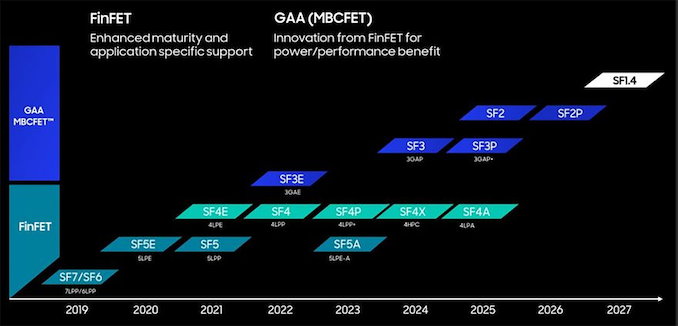
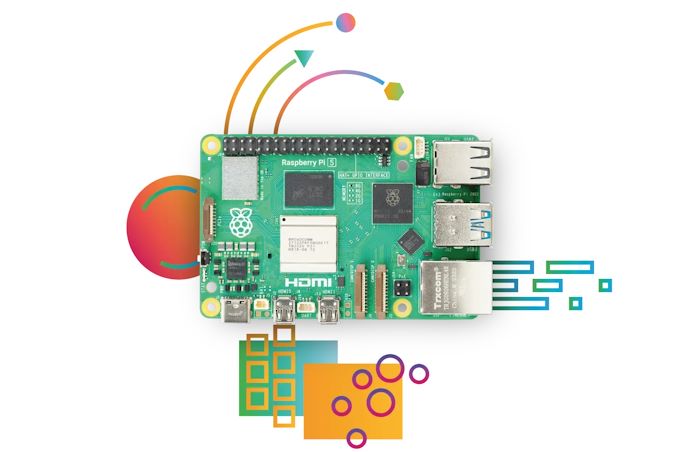
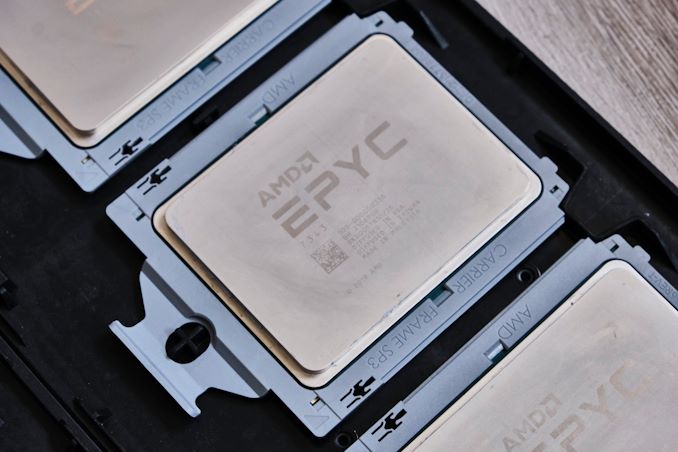

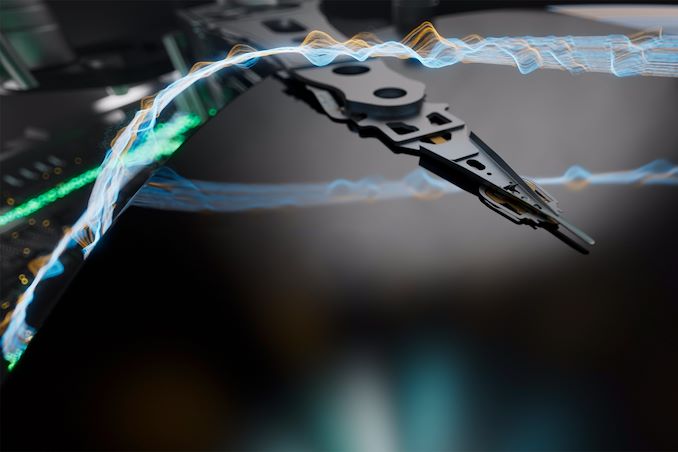


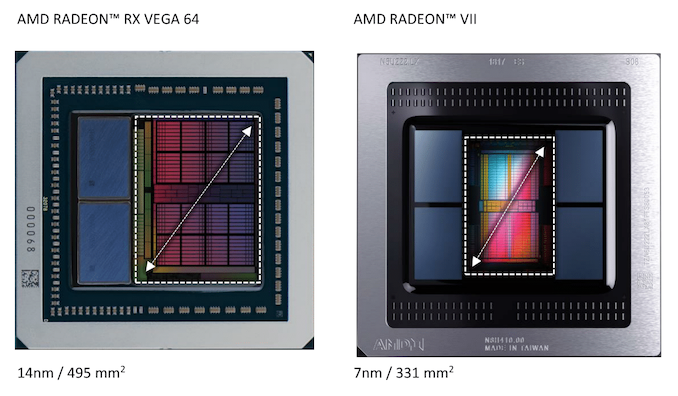
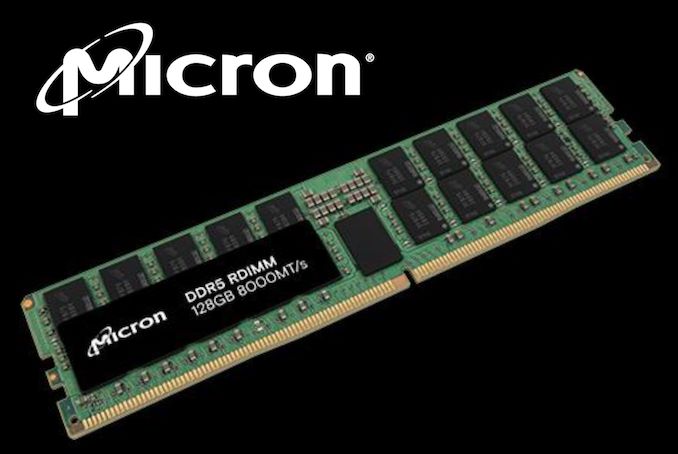

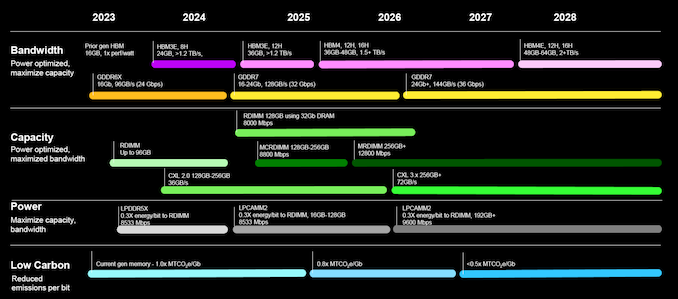

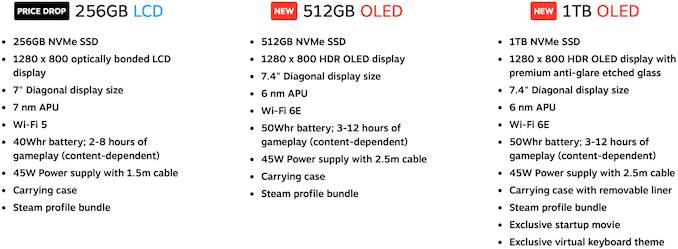

















Bookmarks